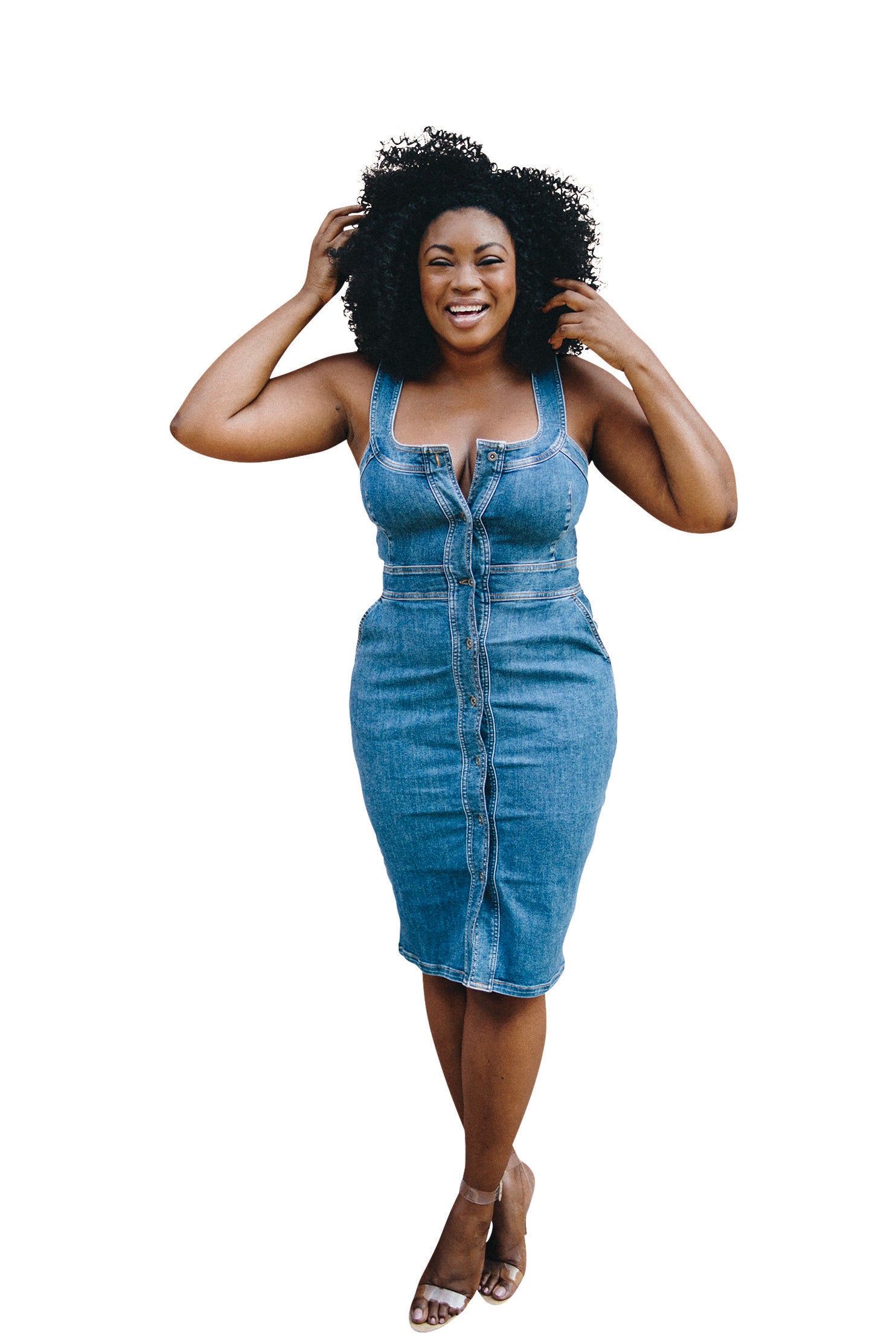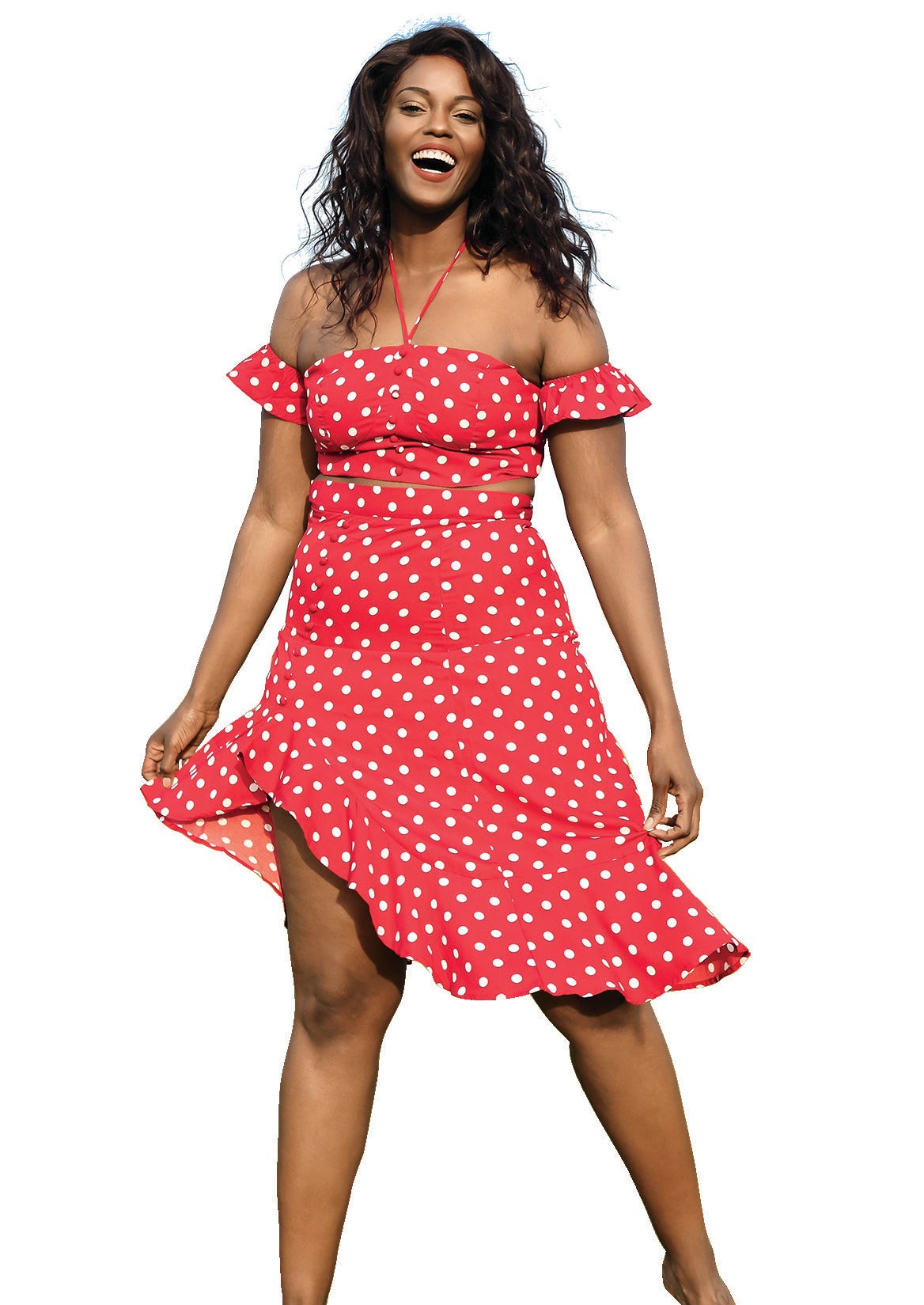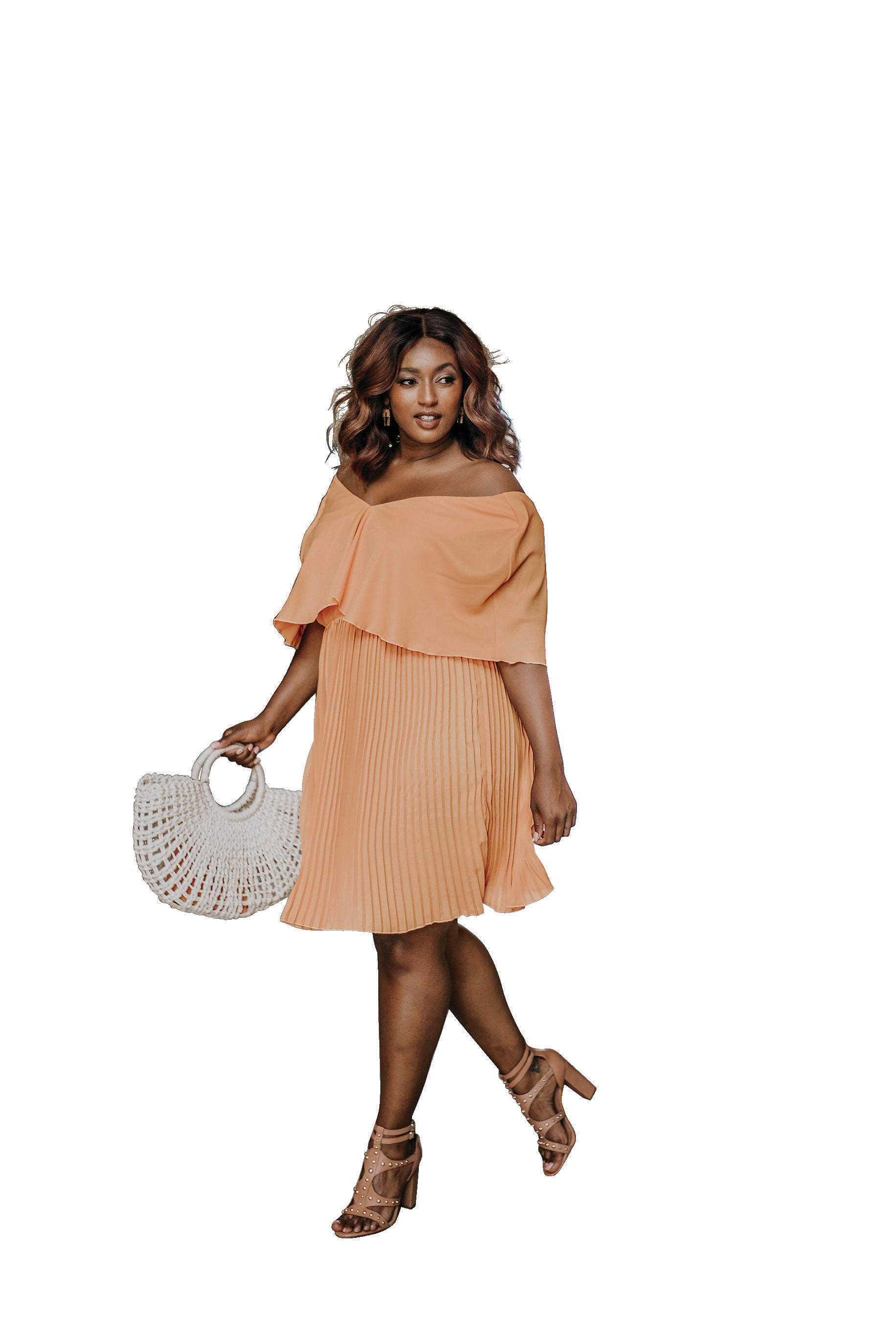Thick. Big-boned. Curvy. Heavy-set. Phat. Fluffy. No matter the moniker attached to one’s body or one’s curves, the plus-size woman and her sartorial choices have come a long way, especially over the past decade. With studies showing that the average American woman wears a size 16 to 18, you would think that stylish options would be plentiful. But plus-size women are only now starting to receive some fashion love, as designers and brands are realizing that this market represents an estimated $24 billion opportunity.
Mainstream fashion labels traditionally ignored the needs of full-figured customers. As a result, plus-size influencers have emerged, launching their own collections, celebrating and championing one another and producing events that draw large followings.
According to Coresight, a business management research firm, the plus-size fashion industry grew by 6 percent in 2016. While general clothing sales increased by merely 1.6 percent that year. And with plus-size fashion account-ing for only 17.5 percent of total retail sales, the vast earning potential of the industry has barely been tapped.
Social Media Gave Plus-Size Women a Voice
To truly understand how far plus-size fashion has come, we have to look at where the community’s presence on social media began. Social media has given bigger women a voice to push back against tired marketing stereotypes and to challenge brands and retailers to think beyond a limited scope. Social media has allowed us to express our likes and dislikes directly to the people who can effect change. One of the greatest impacts of this unfettered access has been the change in how full-figured women are perceived. The community of plus-size women is finally being recognized for its diversity. No longer are larger women hiding their curves or dressing primarily in dreary “slimming” colors. Today’s plus-size woman is living her best life, confidently and unapologetically.

The various social media platforms like Instagram, Twitter, Facebook, Tumblr, Pinterest and Snapchat, as well as blogging tools such as Blogger and WordPress, have given plus-size women multiple outlets to express themselves and to connect with their tribe. Liris Crosse, a veteran plus-size model who wowed Project Runway viewers as the program’s first full-figured model in Season 16, agrees: “Social media has had a huge effect on the plus-fashion world because it has held some brands and designers accountable, and that has caused a customer revolution.”
When the retailer The Limited discontinued Eloquii, its plus-size fashion line, back in 2013, the public outcry from blog posts and other social media conversations helped to revive it. “Women are speaking about what they want from brands that cater to them and those that don’t,” Crosse notes. “Brands are paying attention, which has led to plus-size fashion taking a big leap forward.” »
Celebrity stylist and The Art of Dressing Curves author Susan Moses adds, “As a devoted advocate for the plus-size fashion industry, it’s wonderful to see tremendous growth in regard to brands, both through established and indie designers and the pop-up collaborations. I can also confirm that this time, because of social media and a very large, vocal and active plus community, these strides are permanent, and the plus-size industry will only continue to grow.”
In tracing the expansion of plus-size fashion, it’s not surprising that women of color have promoted greater choice. A 2017 Nielson Report found that African-Americans spend $1.3 trillion annually. Pair that with the fact that Black consumers have used social media to create a voice that decision-makers and marketers are noticing and it might seem as if change will come easily. But inclusion is still an issue for curvy Black fashionistas. The result: Many are branching out to create their own brands.
Creating Our Own Lane
Although several of the plus-size fashion industry’s change agents and tastemakers are women of color, they are not equally represented in media. Moses was forced to confront this lack of ethnic inclusivity when writing her book. “We should be represented in all facets of media; our presence should no longer be a surprise or headline news,” she says. “Inclusion should be the norm, yet it’s very challenging to find fashion images of plus models who are ethnically diverse.”
Women are speaking about what they want from brands that cater to them and those that don’t – Liris Crosse
Even as you peruse the latest mainstream plus-size news, from brand campaigns to models, coverage of what happens in the plus-size fashion space is usually one-note—and this applies both to fashion influencers and business professionals. “The plus industry still needs more representation of women of color and sizes above a 16,” Moses asserts. “As a stylist whose niche has been dressing curves for well over a decade, I would like to see everyone do their homework when hiring for curve-centric projects. While there is always room for growth, there are some great resources currently available.” Of course, if plus-size women were to wait around for mainstream fashion to give us what we want, we would not be having this conversation today. Eleven years ago, Full Figured Fashion Week (FFFW) arrived in New York City. Created as a platform to celebrate and nurture the plus community and its fashion designers, FFFW paved the way for new brands, collections and influencers. FFFW also offered an innovative event blueprint that inspired others, including TCFStyle Expo, District of Curves, Lifestyled Honors, The Curvy Con and the newest addition, the Full Figured Industry Awards.

Veteran plus-size content creators and bloggers leveraged their social media platforms to build their own empires. Chante Burkett of the blog Everything Curvy and Chic now owns One Curvy Boutique, her own brick-and-mortar plus-size shop in Ocala, Florida. Personal style blogger Kelly Augustine has launched her own online store, August Raye. Designer Elann Zelie started off as a blogger but now runs the L.A.-based bohemian luxe plus-size brand Zelie For She. Plus-size model turned business owner Grisel Paula launched Rebdolls, with sizes up through a 5x. Influencer Francie Maupin has the Diva Kurves Collection and produces an annual pool party.
As Allison Mcgevena, a television personality and former plus-size model, observes: “The general fashion industry still has a great deal of catching up to do when it comes to putting out trendy, size-inclusive collections, but if plus-size women have proven anything, it is that we are not willing to settle.”
IndiePlus-Size Designers Are Taking the Lead
Perhaps the most interesting recent development is the role of indie plus-size designers, who don’t hesitate to innovate and push their collections to the edge.
While fast fashion brands and stores like Zara and H&M have given us a range of options, what is often missing from plus-size collections are the high-fashion and statement pieces—and this is where the indie designers have stepped in to fill the void.
“The industry once lacked in offering collections with better fabrications and couture details presented with high-level creative direction and sophistication,” explains Moses. But this is no longer the case, especially in today’s fashion climate, which has allowed more of us to take the leap into entrepreneurship. Some of the most creative work is being done in the contemporary space, as plus-size fashion becomes as diverse and segmented as mainstream fashion lines.

Ultimately, the plus-size fashion industry really is about options and access. As the newer brands and traditional ones like Ashley Stewart and Lane Bryant engage with the plus-size consumer, technology and social media are constantly making room for more innovators to enter the arena.
So where does this leave us? As with any evolution, one must adapt or get left behind. Fashion executives are finally noticing that the plus-size community deserves more than what has traditionally been offered. In a $21 billion market where sales potential has not been fully actualized, the ball is in the retailers’ court. Yet even now, with brand launches and new collaborations, traditional retailers and brands have yet to fully understand the needs and desires of the plus-size community. And so entrepreneurs will continue to create their own plus-size resources, tapping into the huge potential market through their indie clothing lines, magazines, blogs, events and boutiques. As Mariah Chase, CEO of Eloquii, sums up: “While there’s been exciting growth over the past few years, we see the current size-14-plus industry continuing to grow based on the fact that the customer’s options, both online and offline, are still significantly underserved. When you unpack population and demographic statistics and compare those with the current market size in dollars, we’ve still got a significant gap to close.”
